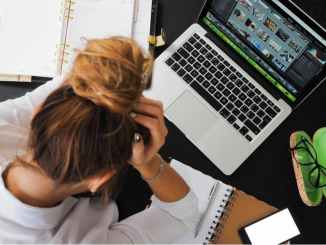
by James Titchen
 Face masks.
Face masks.
No one enjoys wearing them. Unfortunately, for the time being, they’re a part of our everyday lives as the COVID-19 pandemic continues.
But are they necessary during exercise? Do they impact performance, and why do they feel uncomfortable?
In this post I take a look at the issues surrounding their use, and see what the science says.
Outdoor Exercise
Fortunately, outdoor environments have been shown to be 18.7 times safer than indoors for transmission of coronavirus under normal (ie non-exercising) circumstances.
Provided you can maintain a 2m distance, outdoor exercise appears to be a much lower risk, and the best option available for the time being.
But what about those participating in exercise around others when restrictions do lift, such as those in classes, or working one-to-one with a personal trainer?
Are Face Masks Needed During Indoor Exercise?
Definitely!
Within less than one month in early 2020, aerobic dance classes at 12 sports facilities in Cheonan, South Korea were linked to 112 coronavirus infections.
In fact, simply the act of heavy breathing in an enclosed space has led to multiple transmissions of the virus.
In March 2020, a choir practice in Washington state, USA, attended by 61 people, led to 32 confirmed cases and 2 deaths from coronavirus.
With masks being necessary when exercising with others, what do they actually affect?
What Masks Don’t Affect
In what may come as a surprise to those who have tried exercising whilst wearing a face mask, research shows that they don’t have a profound effect on the body.
At low levels, masks have little to no effect.
Participants walking on a treadmill for one hour while wearing face masks showed no difference to those without face masks.
Neither is there much difference at higher intensities.
When 16 healthy men cycled to exhaustion with and without masks on, it was found that:
‘Heart rate, respiratory rate, blood pressure, oxygen saturation, and time to exhaustion did not differ significantly’.
Another study, this time with 7 men and 7 women cycling to exhaustion, found:
‘Wearing face masks had no effect on performance… no differences were evident between wearing or not wearing a mask for arterial oxygen saturation, tissue oxygenation index, rating of perceived exertion, or heart rate at any time during the exercise tests. Wearing a face mask during vigorous exercise had no discernable detrimental effect on blood or muscle oxygenation, and exercise performance in young, healthy participants.’
While there’s little to no effect on the body and on performance, and no significant difference between men and women, anyone who’s tried exercising while wearing a face mask will know that there’s a very noticeable difference in breathing! Why is this?
What Masks Do Affect
The biggest effect of face masks is that they cause ‘dyspnoea’, the unpleasant sensation of discomfort and shortness of breath while breathing.
Exactly why they cause dyspnoea isn’t clear.
Masks increase resistance to air-flow, making it harder to pull air in and out of your lungs with each breath.
Resistance to breathing also increases as moisture from the breath saturates the face mask. How quickly this happens will vary, depending on how quickly one is breathing, and how humid the air itself is.
Masks also create a build-up of carbon dioxide between the mask and face, leading to more carbon dioxide in exhaled air.
However, neither increased resistance or carbon dioxide have been shown to cause dyspnoea on their own.
The strongest candidates are heat and humidity, although this is speculative. The greater the heat and humidity, the greater the sense of dyspnoea.
Whatever the cause, while dyspnoea may be uncomfortable, it won’t affect your exercise performance.
(For those checking out the references, one study did find that wearing a face mask reduced performance. However, later studies speculate that this was due to an additional, tighter mask used in this study to monitor breathing in addition to the standard face mask, and that this therefore doesn’t reflect real life face mask wearing).
Not All Masks Are Created Equal
So, it’s harder to breath with a mask on, and there’s more CO2in each breath. But that’s not the only difference to be aware of.
There are different varieties of face masks available.
By far the most common in everyday use are surgical masks – the cheap, blue, disposable ones that have become emblematic of the pandemic.
As well as surgical masks, there are higher grade masks available, such as the FFP2 mask in Europe and N95 mask in the United States, which are more expensive than surgical masks (and in some countries have been reserved for medical workers).
Fortunately, from an exercise perspective, cheaper is better.
The blue surgical mask leads to less discomfort, and provides less resistance to breathing, than the more expensive N95 and FFP2 masks.
Is It Ever Unsafe?
Thankfully, the evidence doesn’t definitively state that exercising with a mask on poses a substantial risk to anyone. Frustratingly though, the evidence doesn’t definitively state whether exercising with a mask on poses a risk to anyone!
The kind of mask worn has a small effect for sufferers of Chronic Obstructive Pulmonary Disease (COPD).
In a 6-minute walking test, COPD patients wearing surgical masks:
‘did not exhibit major physiologic changes‘,
while a similar 6-minute test of COPD patients, this time wearing N95 masks, found:
Beyond that, no research has been done on the effect of exercising with a face mask with specific health conditions.
However, individuals with COPD, heart failure and diffusion disorders, such as cystic fibrosis and emphysema, are advised to consult with medical professionals before exercising, and proceed with caution if wearing a face mask, due to their body’s impaired ability to compensate with the challenges posed by mask use.
What Can You Do?
- Bring a second mask to swap over to after 20 – 30 minutes of exercising.
- Avoid the N95 and FFP2 masks, and go for disposable surgical masks instead.
- Avoid having to do your most strenuous work outs while wearing a mask if possible.
- Exercise outdoors, away from others, where it’s safe to avoid using a mask.
While exercising with a face mask isn’t fun, it’s a necessary precaution to prevent the spread of coronavirus. It will feel uncomfortable, but provided you have a fresh mask your performance should, at the very worst, only be impaired minimally, if at all.
Stick to surgical masks, bring a fresh one to change into and check with your doctor if you have any underlying heart or lung conditions before exercising.
(James Titchen is a freelance personal trainer in Sutton Coldfield, United Kingdom. He can be found through his website www.homefitandhealthy.com)



